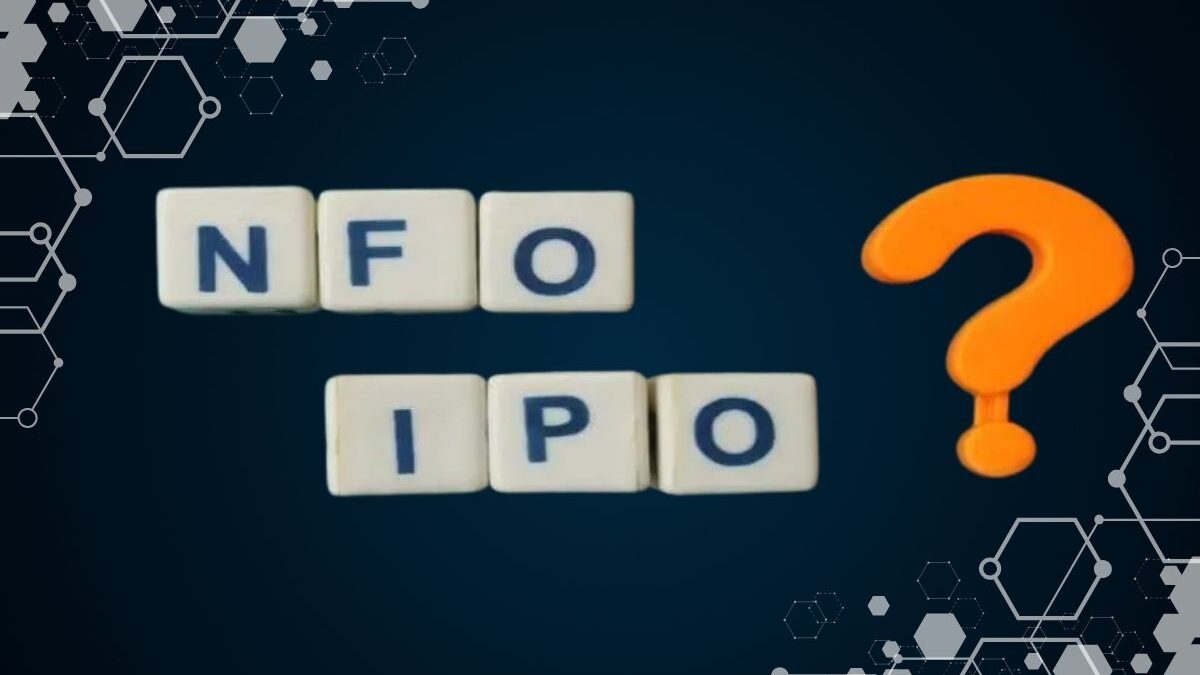With the boom of the Indian capital markets in 2025, retail investors are receiving a regular stream of high-profile IPOs and NFOs from mutual fund houses. They both create massive buzz and get record applications, riding on stories of ground-floor opportunity and the possibility of being a part of the next big thing.
However, IPOs and NFOs have vast differences in the risks, returns, and mechanics despite seeming the same in terms of hype. In this blog, we will explore what makes them different and how investors should approach these two vehicles.
Table of Contents
What is an IPO?
An Initial Public Offering (IPO) is the process by which a privately owned company raises capital by offering its shares on the stock exchange to the public for the first time, becoming a publicly listed entity on the Indian stock market. Big IPOs, such as Tata Capital, LG Electronics, and Midwest, took centre stage in October 2025, attracting thousands of applicants and high levels of oversubscription.
Why do IPOs attract hype?
- They provide an opportunity for retail investors to buy stocks at the same price as institutional investors.
- Many upcoming IPOs have the potential of listing gains based on peer performance or industry hype.
- Glittering tales of expansion, market domination, and scalability accompany big brand IPOs.
- Media and brokerages fuel the momentum by sharing grey market premiums, likely allotment scenarios, and subscription figures.
What is an NFO?
An upcoming NFO is the introduction of a new mutual fund scheme, in which investors can buy units at an offer price prior to the scheme portfolio being made. They give a way for investors to get an early advantage in investing in a fund at a lower rate of Rs. 10.
Why upcoming NFOs create excitement:
- The impression of “getting in at the ground floor.”
- Lower ticket sizes than IPOs and easy diversification with small capital.
- Thematic NFOs promise a focused exposure to new segments such as renewables, global technology, or defence.
- Large AMCs do heavy marketing to encourage the feeling of missing out if investors are not pursuing their NFOs.
Same hype, different outcomes
Both IPOs and NFOs create FOMO among investors. These are aggressively sold by creating hype through heavy marketing by brokers and distributors, but their outcomes are different:
- IPOs can bring in sharp listing profits or some significant losses. For example, LG Electronics’ IPO had more than a 45% single-day profit on listing, but Mittal Sections or OMFREIGHT fell flat on its hype on its listing debut.
- NFOs rarely result in the same type of rapid gains that an IPO might, because most early NAVs flatline or underperform, as the market usually corrects itself shortly after a launch.
- Well-researched IPOs with good profit growth can give multibagger returns over a period of time, but most of the NFOs drift towards index or diversified fund performance- assuming that the AMC and manager are performing well.
Final Thoughts
While IPOs and NFOs have both been popular ways to make investors’ dreams come true, these are two very different bets. IPOs are direct ownership of equities in a particular company and carry a higher potential for quick returns, while being more volatile and risky.
An NFO presents exposure to a diversified portfolio of a new mutual fund scheme, with the goal of managed growth, although it takes longer before results can be yielded. Investors can create long-term wealth on a sustainable basis by remaining disciplined, doing thorough research, and taking up the path that best fits their objectives, risk tolerance, and term of investment.

